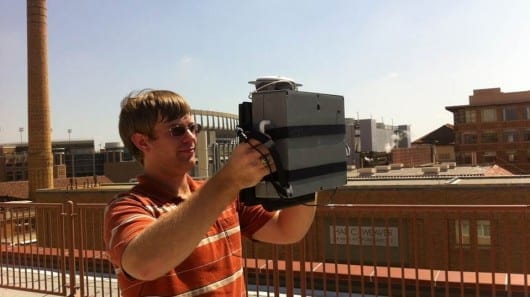
Trading stocks, targeting ads, steering political campaigns, arranging dates, besting people on “Jeopardy” and even choosing bra sizes: computer algorithms are doing all this work and more.
But increasingly, behind the curtain there is a decidedly retro helper — a human being.
Although algorithms are growing ever more powerful, fast and precise, the computers themselves are literal-minded, and context and nuance often elude them. Capable as these machines are, they are not always up to deciphering the ambiguity of human language and the mystery of reasoning. Yet these days they are being asked to be more humanlike in what they figure out.
“For all their brilliance, computers can be thick as a brick,” said Tom M. Mitchell, a computer scientist at Carnegie Mellon University.
And so, while programming experts still write the step-by-step instructions of computer code, additional people are needed to make more subtle contributions as the work the computers do has become more involved. People evaluate, edit or correct an algorithm’s work. Or they assemble online databases of knowledge and check and verify them — creating, essentially, a crib sheet the computer can call on for a quick answer. Humans can interpret and tweak information in ways that are understandable to both computers and other humans.
Question-answering technologies like Apple’s Siri and I.B.M.’s Watson rely particularly on the emerging machine-man collaboration. Algorithms alone are not enough.
Twitter uses a far-flung army of contract workers, whom it calls judges, to interpret the meaning and context of search terms that suddenly spike in frequency on the service.
For example, when Mitt Romney talked of cutting government money for public broadcasting in a presidential debate last fall and mentioned Big Bird, messages with that phrase surged. Human judges recognized instantly that “Big Bird,” in that context and at that moment, was mainly a political comment, not a reference to “Sesame Street,” and that politics-related messages should pop up when someone searched for “Big Bird.” People can understand such references more accurately and quickly than software can, and their judgments are fed immediately into Twitter’s search algorithm.
“Humans are core to this system,” two Twitter engineers wrote in a blog post in January.
The Latest Bing News on:
Machine-man collaboration
- Interview: AI can be friendly force in human-machine collaboration era, says Siemens senior officialon April 26, 2024 at 8:27 am
HANNOVER, Germany, April 26 (Xinhua) -- Artificial Intelligence (AI) can become man's best friend in the industrial world in the new era of human-machine collaboration, a senior official at Siemens ...
- Ruggable’s New Spring Collection Is Inspired by ‘Bridgerton’on April 23, 2024 at 9:01 am
The new Ruggable x Bridgerton collection includes a variety of machine-washable rugs inspired by the steamy, binge-worthy period-piece series, featuring a slew of regal themes and motifs that fans ...
- All the Similarities Between Taylor Swift’s “Fortnight” Music Video and The 1975's Matty Healyon April 22, 2024 at 8:00 pm
After Taylor Swift released the music video for her Post Malone collab, “Fortnight,” TikTok fans broke down all the moments that could be references to ex Matty Healy and his band The 1975.
- How Automation And Real, Human-To-Human Collaboration Go Hand-In-Hand In The Working Worldon April 18, 2024 at 4:00 am
Within the working world, the conversation should be less about how man and machine do battle against one another and more about how they can successfully collaborate.
- Exoprimal x Mega Man - Official Collaboration Developer Update Traileron April 17, 2024 at 6:14 am
Exoprimal is an online team-based action game developed by Capcom. Players will fight together against waves of dinosaurs equipped with humanity's cutting-edge exosuits at the ready. With Title Update ...
- PlayStation’s Puma collaboration goes live tomorrowon April 16, 2024 at 7:32 am
PlayStation and Puma have announced a new collaboration. The first items from the new fashion line go live tomorrow, Wednesday, April 18, and will be available from Puma stores, and the brand’s online ...
- Exoprimal - Official Mega Man Collaboration Traileron April 4, 2024 at 5:00 pm
Check out the Exoprimal x Mega Man collab trailer. The latest collaboration features six new Beta Variant Exosuits including Zephyr Beta: Boost Claws, Vigilant Beta: Bowhunter, Krieger Beta ...
- Synergy between man and machineon April 3, 2024 at 5:00 pm
It begs the question: how do we create stronger synergies between humans and machines to improve production ... disruptions with better and faster collaboration between humans and systems.
The Latest Google Headlines on:
Machine-man collaboration
[google_news title=”” keyword=”machine-man collaboration” num_posts=”10″ blurb_length=”0″ show_thumb=”left”] [/vc_column_text]The Latest Bing News on:
Man-machine collaboration
- Interview: AI can be friendly force in human-machine collaboration era, says Siemens senior officialon April 26, 2024 at 8:27 am
HANNOVER, Germany, April 26 (Xinhua) -- Artificial Intelligence (AI) can become man's best friend in the industrial world in the new era of human-machine collaboration, a senior official at Siemens ...
- Conversational AI Market worth $49.9 billion by 2030 - Exclusive Report by MarketsandMarkets™on April 24, 2024 at 7:33 am
The Conversational AI Market is projected to grow from USD 13.2 billion in 2024 to USD 49.9 billion by 2030, at a compound annual growth rate (CAGR) of 24.9% during the forecast period, according to a ...
- How Automation And Real, Human-To-Human Collaboration Go Hand-In-Hand In The Working Worldon April 18, 2024 at 4:00 am
Within the working world, the conversation should be less about how man and machine do battle against one another and more about how they can successfully collaborate.
- Exoprimal x Mega Man - Official Collaboration Developer Update Traileron April 17, 2024 at 6:14 am
Exoprimal is an online team-based action game developed by Capcom. Players will fight together against waves of dinosaurs equipped with humanity's cutting-edge exosuits at the ready. With Title Update ...
- PlayStation’s Puma collaboration goes live tomorrowon April 16, 2024 at 7:32 am
PlayStation and Puma have announced a new collaboration. The first items from the new fashion line go live tomorrow, Wednesday, April 18, and will be available from Puma stores, and the brand’s online ...
- Exoprimal - Official Mega Man Collaboration Traileron April 4, 2024 at 5:00 pm
Check out the Exoprimal x Mega Man collab trailer. The latest collaboration features six new Beta Variant Exosuits including Zephyr Beta: Boost Claws, Vigilant Beta: Bowhunter, Krieger Beta ...
- Shatta Wale is a ‘one-man wrecking machine’ - Reggie Rockstoneon April 4, 2024 at 5:00 pm
“The reason is; he is a one-man wrecking machine by his damn self ... might have been different during the peak of Shatta Wale's collaboration with Beyoncé, but now, from a business standpoint ...
- Synergy between man and machineon April 3, 2024 at 5:00 pm
It begs the question: how do we create stronger synergies between humans and machines to improve production ... disruptions with better and faster collaboration between humans and systems.
- How Smart Collaboration Workson March 16, 2024 at 4:59 pm
Business cases for smart collaboration abound, yet genuine creative collaboration in business is remarkably rare. Harvard Law School distinguished fellow Heidi Gardner, Ph.D., has researched ...
The Latest Google Headlines on:
Man-machine collaboration
[google_news title=”” keyword=”man-machine collaboration” num_posts=”10″ blurb_length=”0″ show_thumb=”left”]










